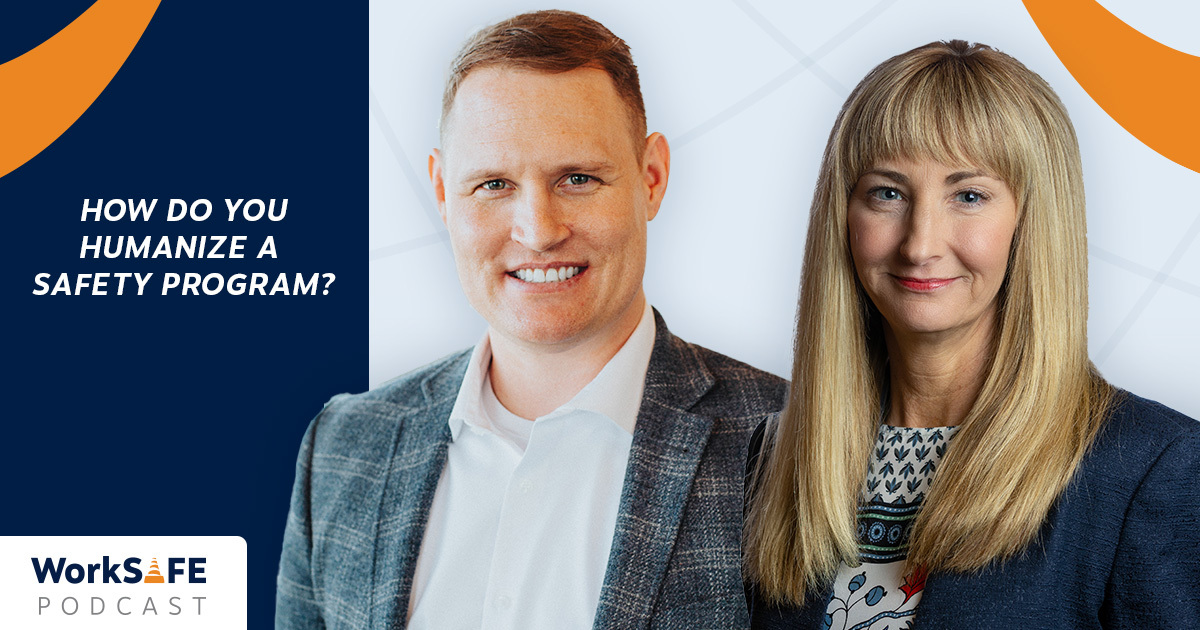For Media Inquiries
Contact Revee White, Director of Marketing and Communications at rwhite1@mem-ins.com or 573.499.4190.
Getting employees to buy in to safety efforts can be a challenge for employers, no matter what industry they’re in. Some get too comfortable in their role. Others find training repetitive or boring. Many know the safety rules and guidelines of their workplace. They just aren’t held accountable in following them. Safety storytelling can make the difference to employees who think they’ve heard it all before.
On this episode of the WorkSAFE Podcast, we welcome Patrick Nelson, founder of Loyalty Point Leadership. He is a speaker, trainer and Fortune 500 consultant in safety leadership development. Approaching safety differently can result in different outcomes. Nelson uses his tragic experience of loss while serving in the Army to help humanize safety leadership.
First, we’ll talk about how Nelson humanizes safety stories through his own experience. Then, we’ll discuss why storytelling is such a powerful tool. Finally, we’ll share how employers can put safety storytelling to use.
Listen to this WorkSAFE Podcast interview, or read the show notes below.
Humanizing the safety experience
Unlike the average safety professional, Nelson’s experience isn’t built on certifications and regulations. His specialty is working with leaders. In 2018, he witnessed a CEO deliver a passionate speech to his employees. It changed his perspective on connecting employees and leadership to safety efforts.
Safety storytelling: Creating the Safety Stump Speech®
At the time, Nelson was working with a Fortune 500 oil and gas company. They were struggling with serious workplace incidents. The prior year had not been a positive one. Together with company leaders, Nelson put together a safety workshop. Rather than stick to the regular safety narrative, the CEO told an emotional, powerful personal story. This led to more than anyone had expected: relevant conversations, practical safety tips and exercises that got employees out of their seats.
From that experience, Nelson created a new kind of training workshop. Each one is built on two key principles: servant leadership and forward-looking accountability. He also developed the concept of a Safety Stump Speech®. Leaders share short, powerful stories with employees on why safety matters to them. Nelson leans on psychological elements; what makes everyone human.
Leading by example
Sharing the message of safety effectively as a leader isn’t just about knowledge. Leaders lead by example. Nelson learned this in a way that he’s never been able to forget. During his time in the Army, a soldier under his command was killed when shrapnel hit him in the head during an attack. Nelson suffered minor wounds. But the scars aren’t the most painful part of the memory.
“Right before this happened, I had almost told him to put on his helmet,” he shared. He’d noticed the soldier wasn’t wearing one. “But I realized I didn’t have mine on.” He didn’t want to criticize someone else for not doing something he himself wasn’t doing. The cost of not speaking up when there’s an obvious hazard can be high. And while the helmet still might not have saved his soldier’s life, it’s not knowing for sure that’s the hardest to deal with.
“When I think of what makes somebody a good leader, it is exactly what makes somebody a good safety leader as well,” he commented. “You know, they’re accountable. They’re credible. They can communicate well.”
The power of safety storytelling
Every safety story is important. But not all of them are powerful. In telling long, drawn-out stories, sometimes the core message can be lost. This is especially true when employees have been through hours of training or aren’t very receptive.
Nelson brings the concept of Safety Stump Speech® to his clients with this in mind. “Some of the most powerful sum speeches I heard in these organizations were like 45 seconds to a minute and a half long,” he explained. “They’re very brief. But they’re also personal and powerful.” What is it that makes these short safety moments different?
They humanize us in the eyes of others
Stories help us to connect with one another. And those connections can make all the difference in risky moments. “The more that you know somebody, the more likely you are to watch out for them, to have their back and to make sure they’re safe,” Nelson shared. “What that tells me is that there is value in taking time in building connections with others at work.” One of the best ways to do that is by sharing these personal experiences.
Months down the road, employees won’t remember every single word of every story. But they will remember how their teammates made them feel.
They go against expectations
Safety training often comes with certain expectations. Hours spend in a break room or conference hall, watching presentations from professionals who may – or may not be – in the same industry. Nelson certainly encountered this. At his Fortune 500 oil and gas company, employees were nicknamed ‘roughnecks’. Safety training was just another requirement to them. They showed up because they had to.
At the beginning of every training, after sharing his own story, Nelson flips expectations. Each employee will share their own Safety Stump Speech®. Most hesitate. They weren’t expecting to have to share their own experience. But by the end, many employees want to share. They want to be seen and heard by others. They want to talk about the lessons they’ve learned. “That’s the the kind of stuff that’s gonna move the needle on safety. It’s not gonna be ‘hey, here’s a hot new piece of PPE to wear, here’s a new OSHA regulation.”
They open the door to new opportunities
Safety Stump Speeches® peel back the barriers and hesitations that make exist between employees and important workplace safety conversations. However, Nelson highlights that employers need to make the most of the environment they create.
“You can bring somebody in that’s going to tell you a great story,” he explained. “They might make you laugh, make you cry, but it’s kind of like a sunburn that wears off after a few days.” Safety stories open doors to allow in fresh ideas and connection, which can make further investment of time and money even more of a worthy cause for a company.
Using safety storytelling to fuel change
When it comes to safety, no one is perfect. Everyone has made a mistake before. They’ve taken a shortcut, skipped out on wearing safety gloves or glasses, or let their mind wander on the job. But more importantly, they’ve seen other people make these same mistakes – over and over again. Without courage and the personal connection to others, they won’t speak up. As a result, unsafe behaviors go unchecked.
Even a single storytelling session can benefit employees. But to create lasting impact, employers need to prepare to nurture safety culture over time. “There’s power and value in prioritizing time together with people, and building those deeper relationships,” Nelson added. This means investing in others by listening to what they have to say and learning from one another.
“You can prevent people from getting hurt. You can save their life,” he reminds employers. “But you have to be able to speak up and you have to take action.”
For free safety posters, sample policies, and safety toolkits, visit our Resource Library. Then, check out this WorkSAFE Podcast episode on using empathy and awareness to build a better workplace.


